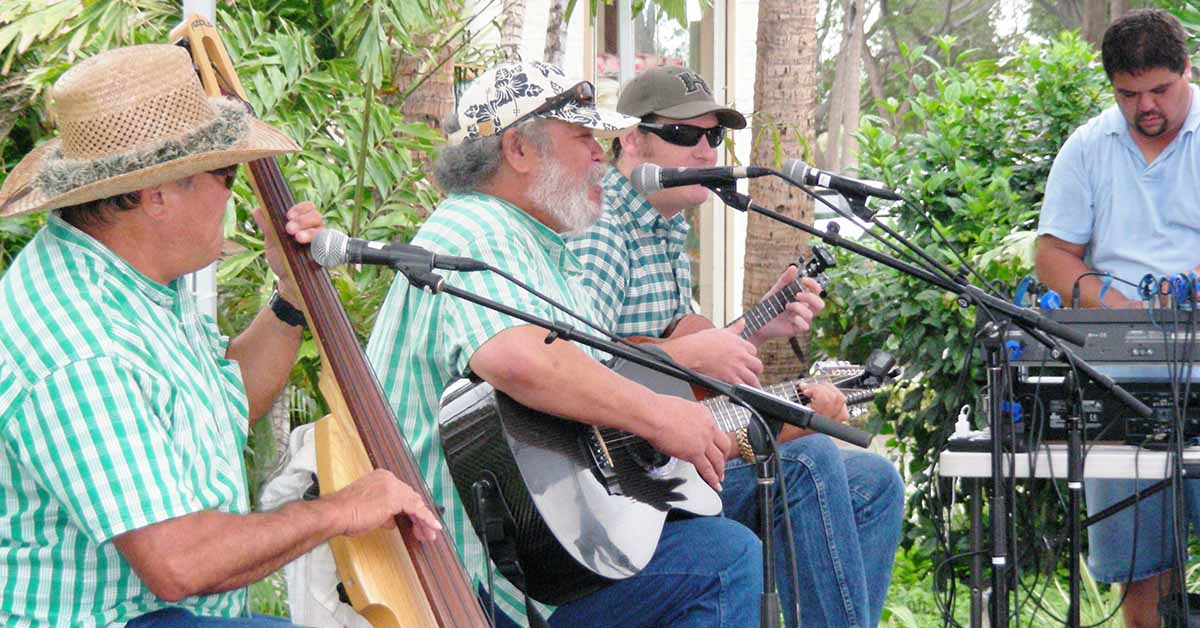
Bradda Smitty and Friends
When you listen to paniolo music, what do you hear? What sets it apart as its own special “brand” of Hawaiian music? You may hear the sliding silver stings of steel guitar, intricate ‘ukulele and slack key plucking and strumming, high-pitched falsetto voices, yodeling, catcalls, even whistling. But what really distinguishes paniolo music is its heart, and its history, as all these elements found their way to Hawai‘i over the years.
In 1832, the first Spanish-Mexican vaqueros came to Hawai‘i at the request of King Kamehameha III, Kauikeaouli. At the time, a burgeoning wild cattle population was wreaking havoc on the countryside. These were descendants of cows given to, and released by, Kamehameha I some 50 years prior. The vaqueros would teach local men to rope and ride, and help get the problem under control. Called paniolo (from Espagnol), these skilled cowboys arrived with their boots, saddles, and guitars—and a new style and sound of music instantly resonated with Hawaii’s people.
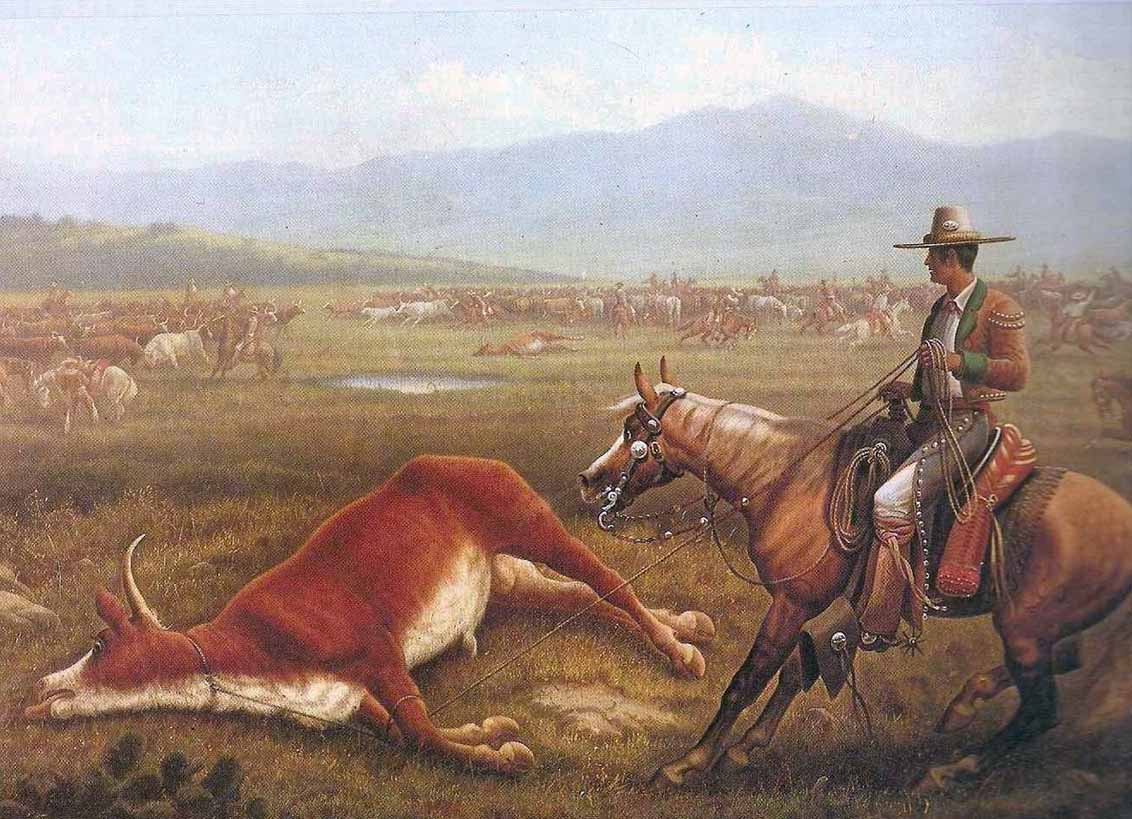
The Mexican paniolo also brought yodeling, which believe it or not, they had learned from the Bavarians who colonized Mexico in the 1600s. They imitated the cow herders in the mountains, likely making fun of their odd, if rhythmic, nonsense singing. It’s possible that falsetto singing, leo ki‘e ki‘e, grew from there, as men learned to pitch their singing voices into a higher range than their speaking voice. More likely it was drawn from traditional ‘oli, Hawaiian chant. Paniolo musicians embraced it all, practiced, and made it their own.
As their musical skills evolved, guitar players experimented with different tunings of their strings (other than the standard E-A-D-G-B-E). To do this, they would loosen or “slack” the tension on (usually) three strings to produce a major chord without fretting, the most common being the Taro Patch tuning (D-G-D-G-B-D). This exciting new style called Slack Key (Kī hōʻalu) grew and evolved among skilled guitarists, creating 50+ different tunings over the years.
Musician and musical historian Bob Brozman says of Hawaiian guitar, “Wherever the guitar arrived in the world, without instruction, people found the simplest way to play it… With the Hawaiian guitar, the open major keys let you get started right away.”
He goes on to say that there are two types of people: the colonizing people and the people who are colonized. Colonial music is essentially march music in four/four time. “Hut-two-three-four, hut-two-three four,” says Brozman. “But, colonized music doesn’t follow the beat it reacts to it.”
Very true of paniolo music and Kī hōʻalu with more complicated rhythm, strong backbeats, triplet picking, tapping and overtones. Musicians were breaking the “rules” or making them up as they went along. Then waves of colonized people began arriving to Hawai‘i by ship.
In the mid-19th Century, immigrant workers—from China, Japan, Korea, the Philippines, Puerto Rico and Portugal—came to labor on the sugar cane plantations. With them, came new languages, cuisine, culture and of course music.
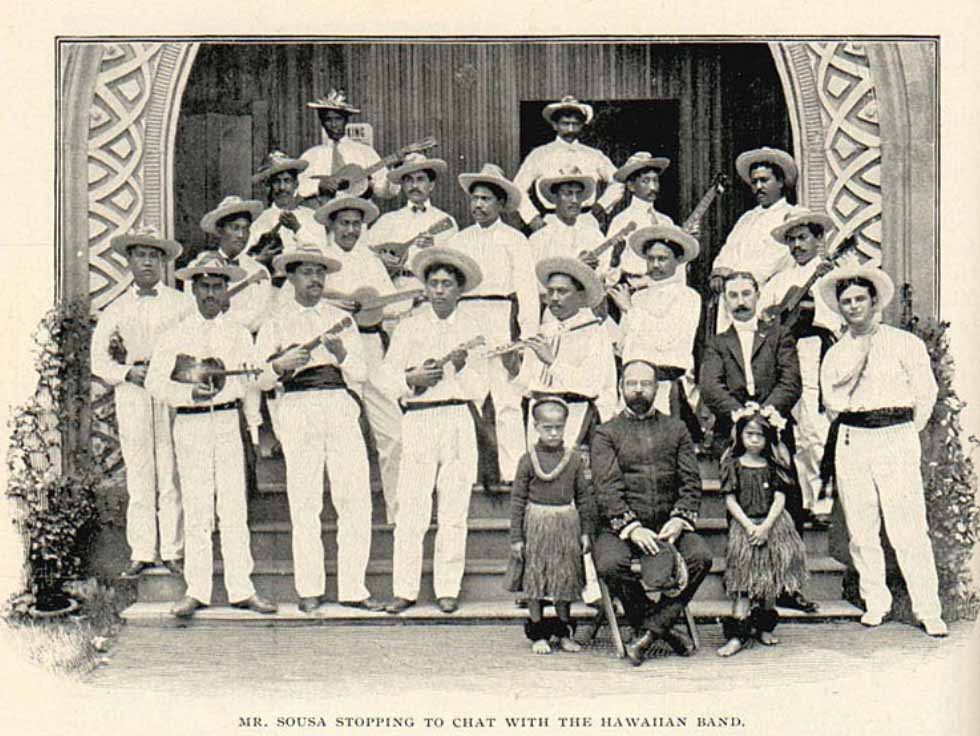
The first instrument that went viral (for its day), was the ‘ukulele. On August 23, 1879, a ship called Ravenscrag sailed into Honolulu Harbor carrying passengers from Portugal, including Augusto Dias, Jose do Espirito Santo, Manuel Nunes, and musicians Joao Luiz Correa and Joao Fernandes. With them were new, smaller stringed instruments called braguinha, rajao, cavaquinho or machete.
As they pulled into the dock, they serenaded the waiting crowd, to rousing applause. Immediately, the mini-guitars were in demand. Hawaiians called them ‘ukulele, roughly ‘uku (flea) + lele (jump). This refers to the skilled musician’s fingers as they deftly pluck strings, tap on the soundboard and skitter up and down the neck. These were easier to carry than full-sized guitars, and paniolo music adopted the ‘ukulele right away. By 1888, four of the original five Portuguese craftsmen had their own ‘ukulele shops.
About the same time, in 1885 a young man, Joseph Kekuku, was walking along the train tracks and found a railroad spike. He hefted it and put it in his pocket. When he reached home he got out his guitar, and started to experiment, sliding the metal spike up and down his guitar strings, with the instrument laying in his lap. His invention made its mainland debut at the 1915 World’s Fair, where Hawai‘i was promoting tourism for the first time. Their booth featured non-stop music, and the Hawaiian Steel or Lap Steel Guitar was another instant sensation, readily embraced by jazz, country, and ragtime artists.
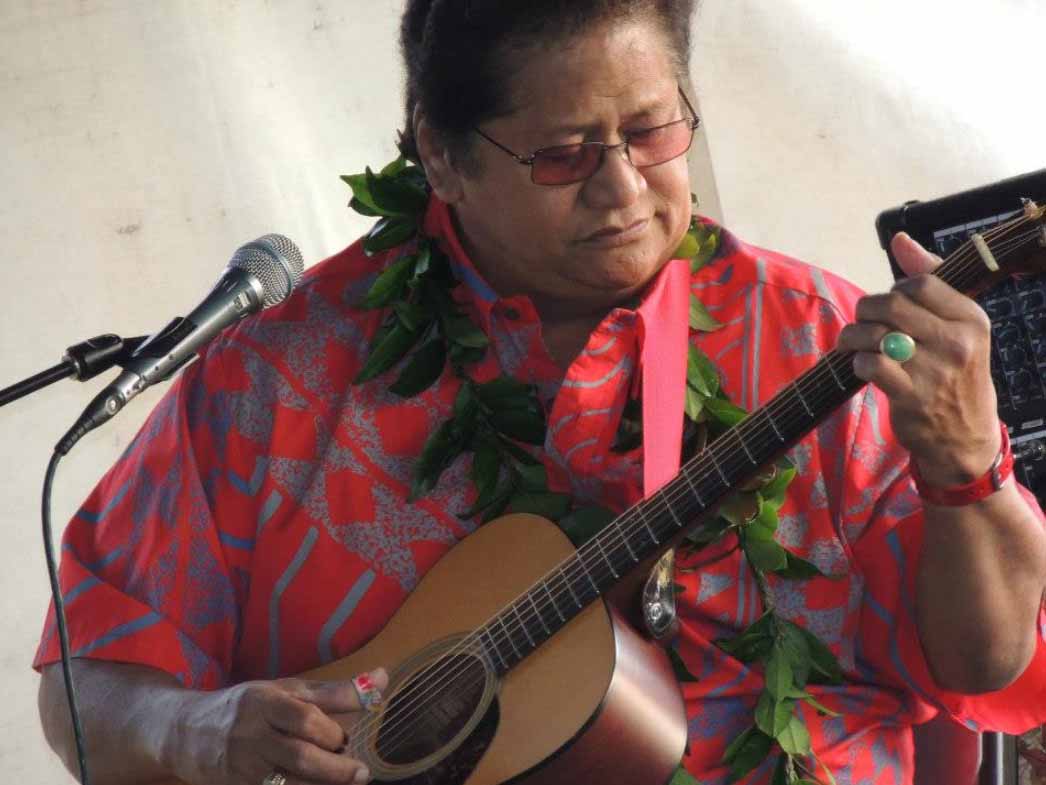
Ledward Ka’apana
All these instruments and musical styles make up paniolo music, but what is equally, if not more important are the stories. Lyrical paniolo music tells of beloved places, of legendary cowboys and great loves, ranching life, good times and bad. It celebrates the values of hard work, family, loyalty and aloha. More than anything, it captures a feeling, a sort of fearless presentation of itself. As if it were saying, “This is who I am, this is where I came from, and I’m not afraid to share it.”
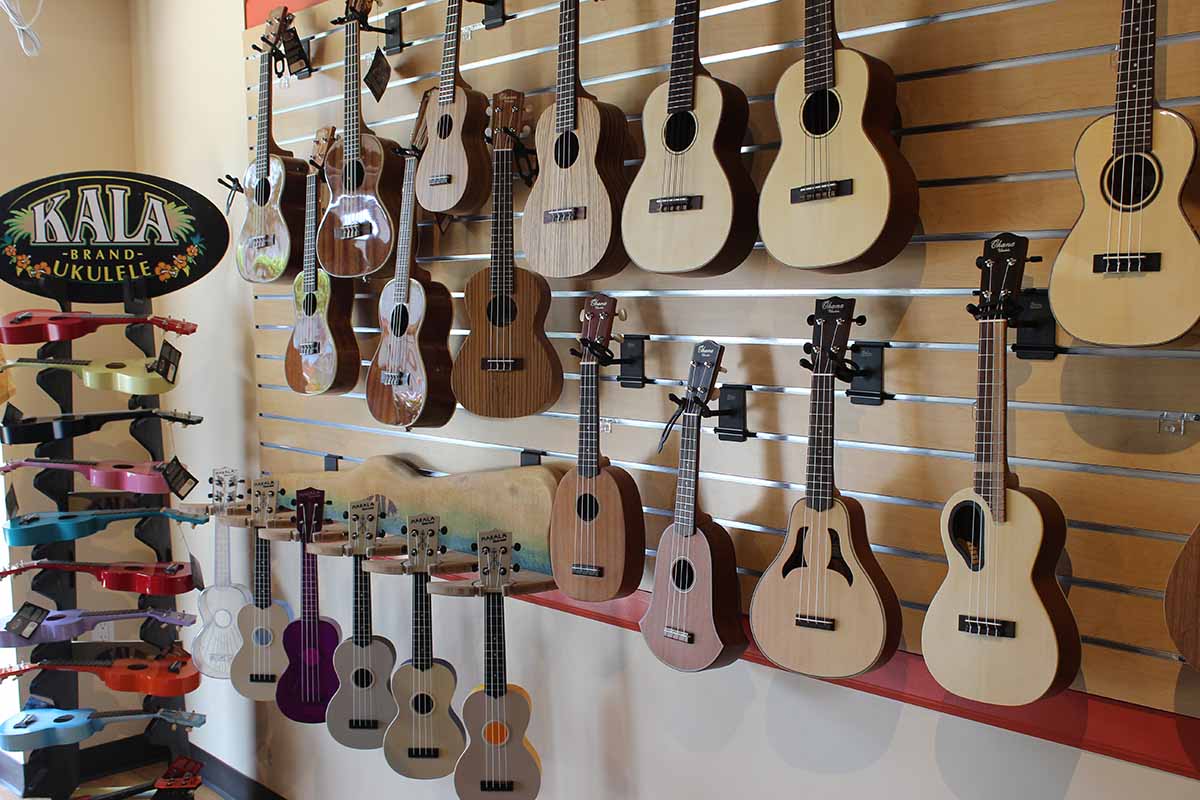
We invite you to enjoy listening to “Nā Mele O Paniolo, Songs of the Hawaiian Cowboy,” on YouTube, Spotify or wherever you stream music!
